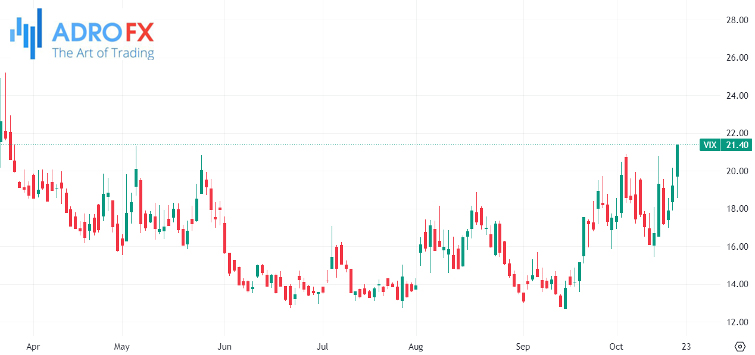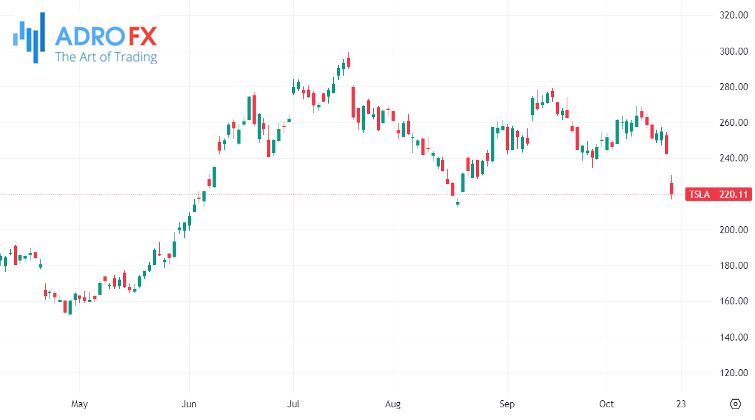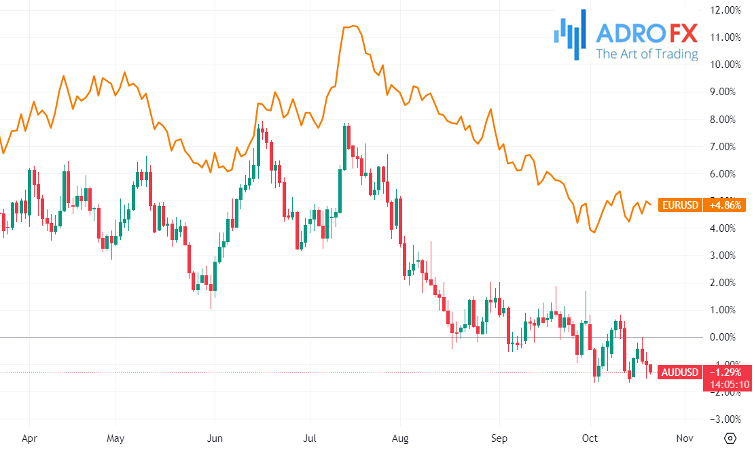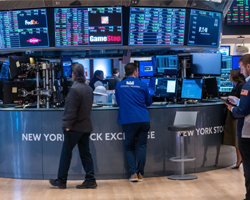Dow Slips Amid Soaring Yields, Mixed Earnings, and Fed's Cautious Stance | Daily Market Analysis

Key events:
- New Zealand - Trade Balance (MoM) (Sep)
- UK - Retail Sales (MoM) (Sep)
- Canada - Core Retail Sales (MoM) (Aug)
- Canada - Retail Sales (MoM) (Aug)
- Eurozone - ECB McCaul Speaks
- USA - FOMC Member Harker Speaks
- USA - FOMC Member Mester Speaks
Thursday saw the Dow ending on a lower note, as investors grappled with a surge in the 10-year Treasury yield, mixed quarterly results, and comments from Federal Reserve Chairman Jerome Powell. The Dow Jones Industrial Average dipped 1%, shedding 250 points, while the Nasdaq experienced a 1% decline, and the S&P 500 posted a 0.9% drop.

Powell's statements emphasized the Fed's cautious approach to future rate hikes in response to a notable increase in Treasury yields, which have substantially tightened financial conditions. However, he also acknowledged that continued economic growth might necessitate further policy tightening.
These remarks from the Fed chief coincided with data indicating a robust labor market, highlighting the underlying strength of the economy. This development pushed the 10-year Treasury yield to nearly 5%, a level not seen since 2007. In response to these factors, the CVOE Volatility index recorded its highest close since March.

Throughout the week, various data points underscored strong consumer demand and a tight labor market. On Thursday, a US Labor Department report revealed that new claims for unemployment benefits reached a nine-month low.
Remarkably, the labor market remains robust, even though the central bank has raised its benchmark overnight interest rate by 525 basis points since March 2022.
At the same time, Netflix, on the other hand, surged by more than 16% following its third-quarter results, which surpassed analysts' expectations. The streaming giant reported its most substantial subscriber growth since the second quarter of 2020. Furthermore, the company announced price hikes in the US, UK, and France, which are expected to boost its average revenue per user.

In contrast, Tesla's stock experienced a 9% decline after its Q3 results fell short of Wall Street's expectations, both in terms of revenue and profitability. Recent price reductions hurt its margins.
During the earnings call that followed, Elon Musk expressed a more cautious outlook, focusing on higher interest rates, investments in full self-driving and artificial intelligence, and the challenges ahead for Cybertruck production over the next 12 to 18 months.

The Bank of Japan took action in the Japanese government bond (JGB) market for the fifth time this month, as the 10-year yield reached a fresh decade high, pitting the BOJ against surging US yields. The benchmark JGB yield surged to 0.845%, its highest level since July 2013, but eased following the BOJ's intervention, ending 1.0 basis point lower than the previous day.
The BOJ maintains a 1% cap on the 10-year yield under its yield curve control (YCC) policy. However, it has shown it will intervene to curb sharp moves towards this limit.

The BOJ's intervention in the bond market has created a delicate balancing act, as it risks weakening the yen to a level below 150 per dollar, a threshold viewed as a critical point for currency intervention. Widening interest rate differentials have driven a substantial decline in the yen against the dollar since the BOJ's policy announcement in July. The weak yen has been a contentious issue, contributing to higher imported energy and food costs at a time when Prime Minister Fumio Kishida may be considering a snap election.
The Dollar Index experienced a slight retreat following Federal Reserve President Jerome Powell's statement that the next policy move would be contingent on data. The DXY stabilized at 106.25, retracting from its previous overnight peak at 106.67.

The Euro (EUR/USD) recorded a modest uptick, climbing to 1.0582 from 1.0570 the previous day. It briefly touched an overnight high at 1.0617 before easing.
The Australian Dollar (AUD/USD), a risk-oriented currency, slipped to 0.6333 from 0.6355. Australia's latest job figures presented a mixed picture, with the Jobless Rate improving to 3.6% from 3.7%, but jobs created in September dropping to 6.7K, a notable decline from the 63.3K recorded previously and falling short of the estimated 20.6 K.

The economic calendar for the day commenced with New Zealand's Trade Balance for September, which stood at -NZD 2.329 billion, a slight increase from the previously revised -NZD 2.273 billion (revised from -NZD 2.291 billion). The New Zealand Dollar remained relatively stable following the release.
The United Kingdom followed with its September Retail Sales data.
Canada concluded the day's economic releases with its August Retail Sales.









